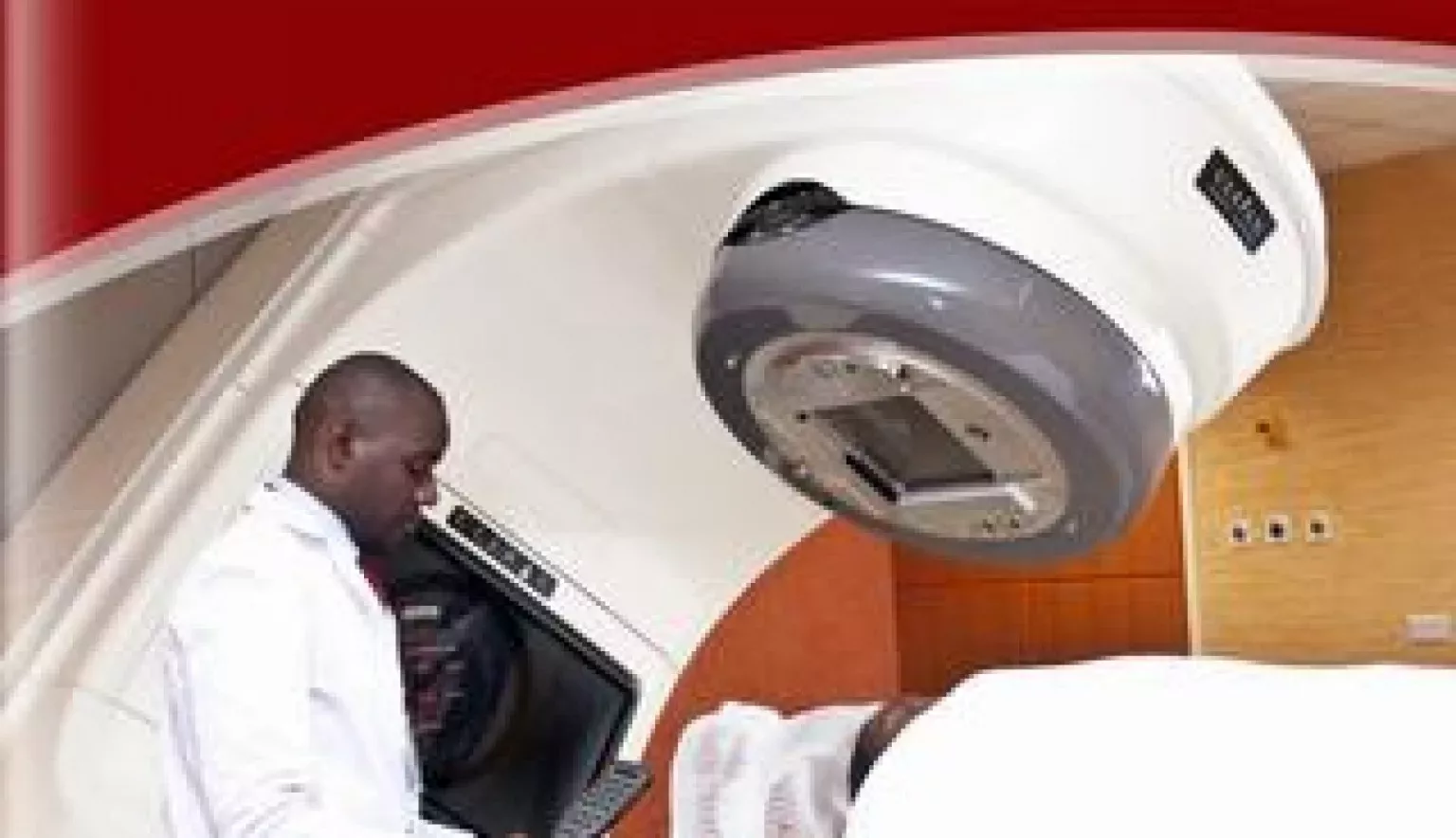The vision for future healthcare is in the process of being unveiled by The Nairobi Hospital, via a new facility that is set to bring enhanced treatment, efficiencies and sustainability.
A CLINICAL MASTER PLAN
Nairobi Hospital is entering the latest phase of its more than 60-year nationally-significant evolution via a new hospital facility that is set to bring enhanced capacity, modernised processes and overall improved healthcare to its patients.
Formed in 1954, its expansion over the years has been one derived from a commitment to quality healthcare, building longstanding relationships along the way to establish itself as a local hub and national centre of learning.
Helping to combat some of the region’s most challenging conditions along the way, its role as a leading healthcare provider in the East African region has culminated in a modern, high technology hospital comprising more than 300 beds; and this imminent new facility is set to take the Hospital on to the next level.
“The Hospital is currently executing its master plan which will be complete in the next three-four years,” explains the institution’s Chief Executive Officer (CEO), Gordon Odundo. “The biggest part of this master plan is the construction of the brand new hospital which will comprise approximately 600 beds.
“We’ve been around since the 1950s, but the drive to continue developing the hospital is still there, and we need to develop it into a modern facility to accommodate the increased aspirations that we have.”
“Personalised patient care is what sets Nairobi Hospital apart,” the Hospital adds on its website. “Expert physician specialists and caring staff provide you with an exceptional healthcare experience.”
And this ethos is set to be replicated in the new facility through the adoption of cutting-edge designs and wards to enhance the patient experience. Across all departments, efficiency will also be a key parameter of gauged improvement, as the Hospital once again proves its ability to expand with the times into new departments and new forms of rehabilitative, critical care.
“We want to implement technologies and facilities and equipment now that will be relevant in 50 years’ time, so are planning for the future already in that regard,” Odundo explains.
A PACESETTER IN MEDICAL PRACTICES
Consisting of a pharmacy, laboratory and radiology departments in-house, the extent of medical services already on offer at Nairobi Hospital is far beyond what the majority of other facilities can offer in the region, and this has manifested from a belief that the Hospital needs to keep ahead of the industry curve, not just in line with it.
“Over the years we have invested heavily in professional human resources and diagnostic and treatment facilities to ensure that patients get quality service,” Odundo states. “The combination of highly skilled specialists and modern medical and non-medical technologies enable us to undertake a wide range of routine and complex investigations and procedures; including open heart surgery, kidney transplants, trauma care, orthopaedic surgery, neurosurgery, laparoscopic surgery, in-vitro fertilisation (ivf) and cancer therapy.
“We are renowned for our emergency and trauma care, disaster response and critical care and the Hospital has excellent facilities for providing high quality clinical and nursing care.”
Such a philosophy of continuous improvement has transpired in the form of numerous industry firsts in the region over the course of the Hospital’s tenure, beginning in 1956 with the opening of its nursing school, and progressing over the decades via the implementation of advanced computing; the first ever kidney transplant taking place in 1978; the opening of its hydrotherapy pool in 1992; its first successful open heart surgeries in 1993; its first ever life support training in 1997; the first laprascopic surgery being carried out in 2002; and the acquisition of a 48-hour tuberculosis detection machine – the first private hospital in Kenya to do so – in 2006.
“Nairobi Hospital was also the first hospital in Kenya to install Endomed 682 v machinery, to perform a cochlea transplant in the region, and to offer brachytherapy upon the opening of our 58-bed oncology and cancer treatment centre in 2012,” Odundo continues. “The Nairobi Hospital has always been a pacesetter in medical practice in Kenya, and will continue to be so.”
IN-HOUSE DEVELOPMENTS
To keep ahead of the game across its outpatient and inpatient services, its research & development laboratory, its nursing services, its pharmacy, radiology, and ambulance services; the effect of turning the Hospital into a University Hospital has been critical in being able to train people in-house.
Not only does this aid areas of skills attraction and retention, but it helps in tailoring the required training towards the key developments being undertaken at the Hospital.
“One of the most important things we want to improve is to increase the amount of training carried out here; training as many as 500 people at one time, which is significant considering we have between 800 and 1,000 employees at present,” Odundo affirms. “This will both attract people and facilitate retention because not many hospitals can offer this, and our training centre allows for concerted in-house development.”
Promoting and evolving local skills specifically has been a challenge over the years, but this is all the more reason for producing such a sustainable legacy of personnel development in the region, so that the Hospital will have a readymade pool of skills to hire from long into the future.
Odundo continues: “It’s not just about the challenge of training them, but about training them in line with the latest technologies and in preparation for the changing healthcare trends and requirements.
“We are doing well to bring them up to scratch though and we now have several medical hubs set up as part of our corporate social responsibility efforts as well.”
AWARENESS OF THE HEALTHCARE ENVIRONMENT
Nairobi Hospital is committed to pursuing continual improvement on all fronts and over the years has received special recognition for its reputation in core areas such as cancer diagnosis, diagnostics and chemotherapy.
“Our Radiology and Imaging Department has established itself as a leader in diagnostic and interventional imaging in the medical sector using different types of state-of-the-art technology to accurately diagnose various types of cancer,” Odundo notes. “The installation of picture archiving and communication systems and radiology information systems (PACS/RIS) has enhanced speed of communication on results of patient tests in addition to strengthening our green technology agenda.
“Chemotherapy was first provided at The Nairobi Hospital in February, 2006. The old chemotherapy unit had three beds, two chairs and a doctor’s office. The most common cancers dealt with in the initial years included breast cancer, prostate cancer, colorectal cancer and non-hodgkins lymphoma. Treatment was provided on an outpatient basis.
“Over the years there has been a rapidly growing demand for high quality oncology and cancer treatment services though, and the Hospital therefore decided to increase capacity by putting up a complete Oncology and Cancer Treatment Centre.”
This Centre includes facilities including an examination room, a recovery room, treatment planning rooms, linac treatment bunkers and high dose rate brachytherapy treatment bunker; epitomising the level of healthcare service already existing at the Hospital, and the comprehensive platform it can now work from as it edges closer to completion of its master plan.
“The main aspects of continuous improvement revolve around our master plan and especially on formulating departments that enhance patient flows,” Odundo concludes. “We need more efficient movement between departments once patients enter the facility, to combine with the general level of treatment and awareness of the healthcare environment that we already have in the Hospital.
“Our master plan will also see us form a greater presence in the future in terms of clinics and health centres in Nairobi with the possibility of establishing other smaller hospitals to reach even more patients in the future.”































